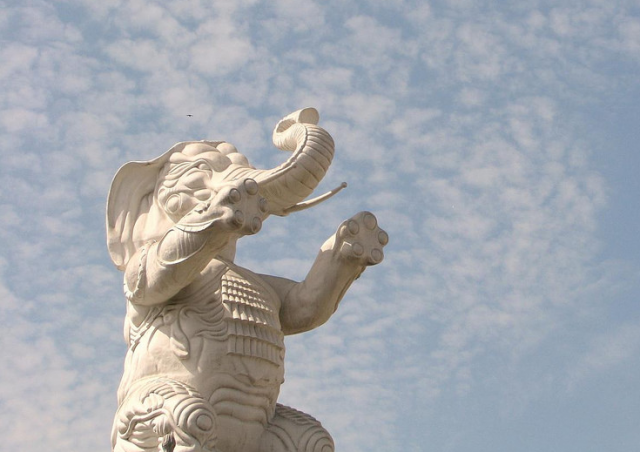Australia frets and fights over the South Pacific
Posted By Graeme Dobell on January 22, 2018 @ 06:00
Up in the Arcadia of the political afterlife, some great Oz leaders are sharing an ambrosia sherbet and reflecting on the recurring rhythms of Australia and the South Pacific over nearly 150 years.
‘The old songs are still the best songs’, Alfred Deakin remarks in his usual meditative tone. ‘Remember how before federation it was the Germans and the French we worried about in the islands?’
‘Now’, barks Billy Hughes, ‘it’s the Chinese! I reckon I could just dust off all those speeches I made about the Japanese threat. And, of course that 1935 book Australia and the war today—that got me turfed from cabinet because it was all too true. In this game, you can get punished for being too right, too early …’
John Curtin coughs and leans forward, knowing the need to cut off Billy before he gets into the full flow of his anecdotage. ‘Ah, yes’, Curtin says, ‘ the Japanese on the doorstep, the seminal, pivotal moment in the way we thought about the island arc and about alliance and … Hang on, you blokes, here comes Bert. Careful, or we’ll get another Evatt rant about the bloody Yanks.’
Just then, the gong sounds for dinner at the Elysium Bistro, so debate is adjourned.
Down below in Australia, today’s pols are keeping up the grand tradition, worrying about foreign intruders, massaging the Oz strategic denial instinct, and lamenting our policy drift in the South Pacific. Old songs, indeed.
International Development Minister Concetta Fierravanti-Wells frets about China’s arrival in the islands, while Labor’s shadow defence minister Richard Marles does the chorus about Australia’s policy myopia.
Senator Fierravanti-Wells says that, despite China’s ‘duchessing’ of politicians in the South Pacific [1], Beijing’s activities are being met with growing resentment in island communities. The aid minister told the Australian that China’s influence is ‘clearly growing’, yet much of its aid consists of ‘roads to nowhere’ and ‘useless buildings which nobody maintains, which are basically white elephants’. China has been kicking back with gusto.
In a thoughtful speech, Marles worries that Australia’s ‘holding pattern for the Pacific’ [2] means the considerable resources we devote to the islands aren’t matched by much imagination or ambition: ‘There is no strategy or guiding philosophy about our role in the Pacific other than a general sense of obligation about providing help.’
Fierravanti-Wells is only guilty of voicing in more pointed language the fears expressed diplomatically in our foreign policy white paper [3]—plus she did it during the slow news period of our summer silly season. The November white paper pointed to the new outsider in the South Pacific without naming China, talking of ‘competition for influence and economic opportunities’ straining the capacity to absorb aid, increasing debt and undermining regional coordination.
Looking past Chinese bombastic replies about Australian ‘ignorance and prejudice’, Xinhua gives us one good piece of advice on the need for Oz to ‘refrain from behaving like an arrogant overlord’. The conversation Canberra needs to have is with the South Pacific as much as with Beijing. As always in the islands, it’s easy for Canberra to proclaim its leadership; the real achievement is to get island followship.
Of course China’s influence is growing. Expanding power systems expand. And for a couple of centuries, coming powers have come to play in the South Pacific. The answer for Australia is not to panic but play to our strengths and do what we should be doing in the region anyway.
If a China ‘scare’ gets us to pay proper attention to the near neighbourhood we often overlook, then thanks for the nudge. The China bogey helps Australia focus on the geopolitics of its own doorstep.
As one example, Australia is going to do a lot of the paying when Papua New Guinea hosts the APEC summit in November (the early estimate had Oz paying at least one-third [4], but bank on it being higher). We’re putting up the cash because of our interests in APEC and as a good neighbour to PNG —and if Port Moresby is too much of a shemozzle, a lot of the blame will land on Oz. But we’re also splashing cash because we’re scared that China might step in and pay for it instead. Good policy has lots of different sources, not all of ’em pure.
The broad new thought that Australia is starting to play with is to offer not just partnership to the South Pacific, but economic and security integration [5]—geopolitics meets geoeconomics in our immediate geography. The proposal to integrate the islands with Australia and New Zealand [6] is one of the ideas in the foreign policy white paper that hasn’t got much attention. But it’s a biggy that will need decades of work.
Integration plays to Australia’s history and role in the region in ways that China couldn’t and wouldn’t match.
Article printed from The Strategist: https://aspistrategist.ru
URL to article: /australia-frets-fights-south-pacific/
URLs in this post:
[1] China’s ‘duchessing’ of politicians in the South Pacific: http://www.theaustralian.com.au/national-affairs/foreign-affairs/coalition-attack-on-china-over-pacific-aid/news-story/29eb518cae5b114272a664aa56a67166
[2] ‘holding pattern for the Pacific’: https://www.lowyinstitute.org/publications/richard-marles-australia-pacific
[3] foreign policy white paper: https://www.fpwhitepaper.gov.au/
[4] paying at least one-third: http://www.abc.net.au/news/2017-02-01/australia-bankrolls-png-summit-costs/8228208
[5] economic and security integration: /foreign-policy-white-paper-2017-integrating-the-south-pacific/
[6] integrate the islands with Australia and New Zealand: /australias-agenda-for-integrating-the-south-pacific/
Click here to print.
